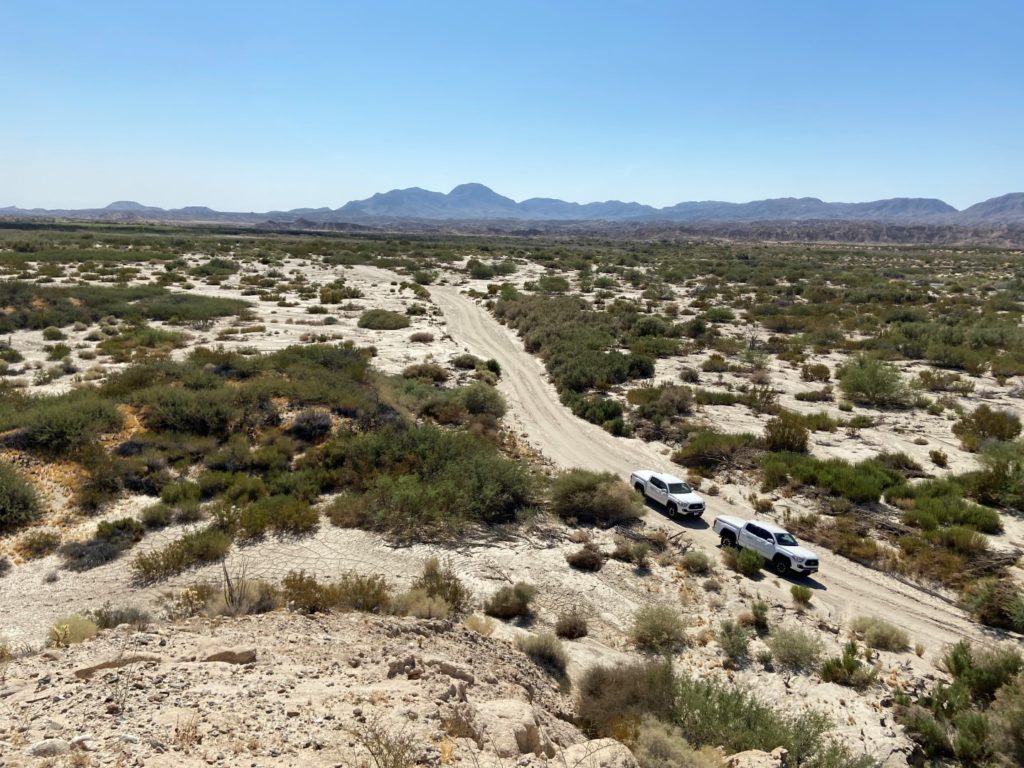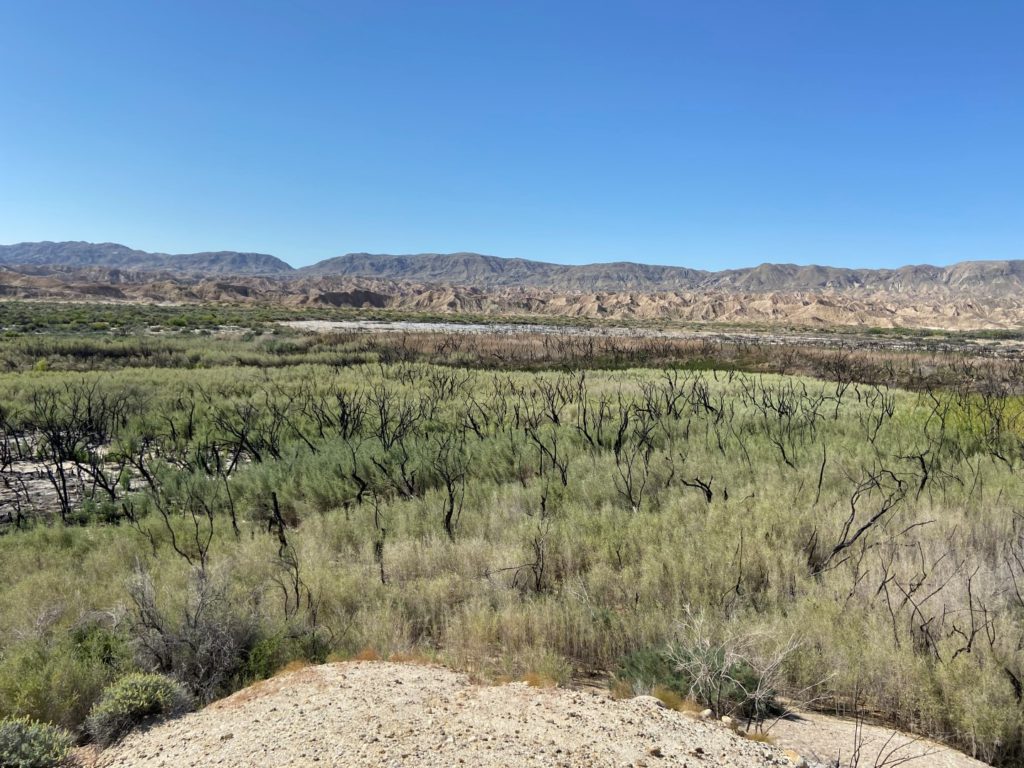The Carrizo Marsh wetland is located in the Anza-Borrego Desert State Park in the Colorado Desert of Southern California. It is an environmental oasis and a jewel in the desert that has supported life for a long time.
In 1976, Hurricane Kathleen made landfall and caused a massive flood event that saw catastrophic damage to the town of Ocotillo. As bad as the damage to the town was, the hurricane brought along an unwanted guest that would cause problems for decades after the town recovered: seeds.
The sedimentation from the flooding carried seeds of many plant species with it, most notably the tamarisk tree, which is considered an invasive species and grows roots deep into the ground. Once established, a tamarisk can suck up to 200 gallons of water a day, which can be a big problem in a desert ecosystem that supports native plants and animals.
Over the next several decades, the tamarisk was very successful at taking over the Carrizo Marsh; 95% of it had been covered by a dense canopy of the invasive trees that were choking out other species and causing disruption of local animals’ native habitat.


Natalie McCue is the Senior Director for Environmental and Permitting at Pattern Energy. She was tasked to work with environmental consultants to find and implement a mitigation project that would provide a net benefit to conservation, offsetting environmental impacts associated with construction and operation of the Ocotillo Wind project. In 2011, Pattern Energy partnered with HELIX Environmental Planning and, in coordination with Federal and State agencies, got approval to remove the tamarisk infestation and restore the Carrizo Marsh.
Work got underway in 2012, and due to the rugged nature of the work and its location, bulldozers were brought in to help uproot the hardy tamarisk, masticators were used to grind up and store the wood, and controlled burns were used to make sure the trees were truly eradicated.
Controlled burns of the tamarisk were done in 2014, 2015, and 2016, resulting in the clearing of over 300 acres of tamarisk trees and shrubs. For the following five years, HELIX monitored the restoration of native plant species and maintained a watchful eye for tamarisk growth, making sure it didn’t renew its threat to the local ecosystem.


The good news is, it worked. More than 318 acres were restored, and 70 percent of native plant species are now covering the Carrizo Marsh. Wildlife movement through the Marsh is now easier for native species, along with access to things like shade and water. In short, the habitat has been made friendly and accessible for the native plant and animal species that live there.


The teams at Pattern Energy and HELIX are rightly proud of the project’s success. “The Carrizo Marsh restoration project represents a monumental transformation from a historically valuable wetland area overrun with invasive plant species to a now flourishing habitat that will benefit the local flora and fauna for generations to come,” McCue said. “The success of this project was the result of long-term collaboration and highly coordinated efforts between numerous Federal and California State agencies to ensure the immediate and long-term success of the project. Pattern Energy is very proud to have been able to support this mitigation effort, and it is truly rewarding to have followed the progress since 2012 and see this site once again restored to a healthy thriving landscape.”
Now that the work is done and the Carrizo Marsh wetland ecosystem is thriving, Pattern Energy and HELIX will return management of the site to California State Parks for long-term management.